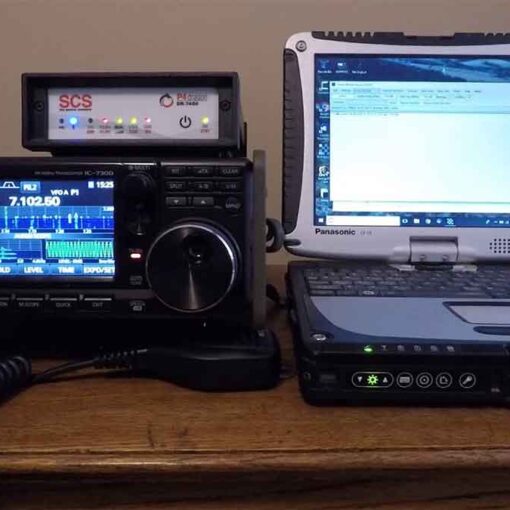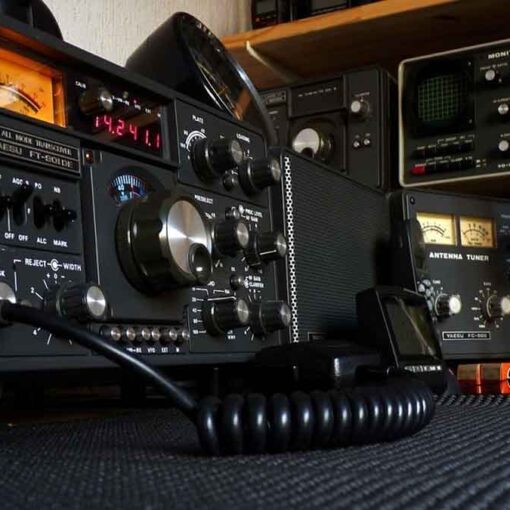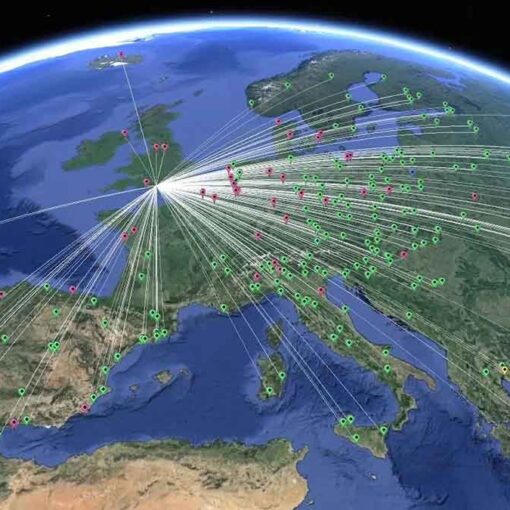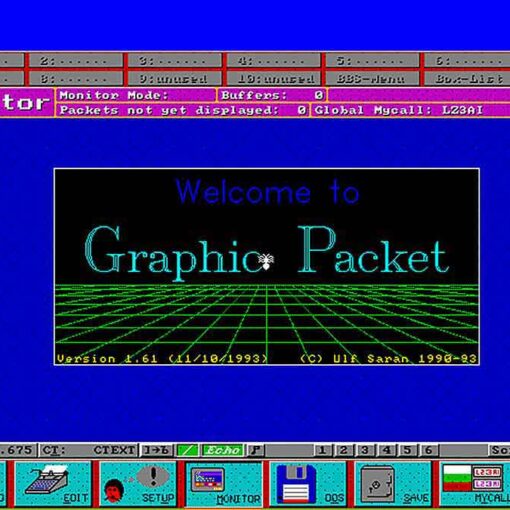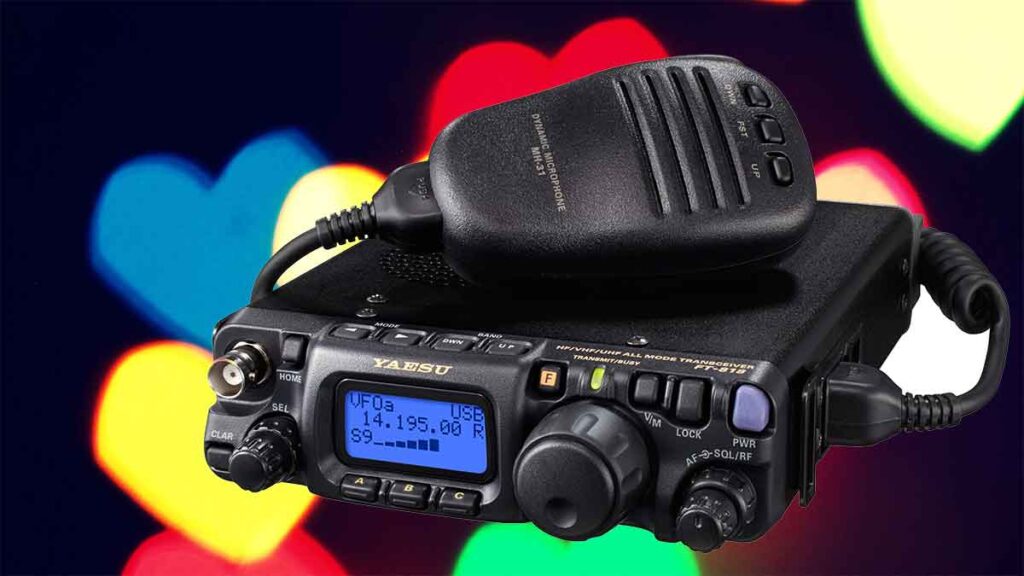
We assume that you have received a response to your CQ, for example:
“LZ2ZZZ here W1ZZZ whiskey one zulu zulu zulu is calling you and listen”
or
“LZ2ZZZ here W1ZZZ over”.
When calling CQ, it should not end with “over”. But when someone answers your CQ, he wants to give you the floor (get a response from you), which means he can now end his call with “over” (meaning “I’m done, hand over to you, give it to you” ).
If someone answers your CQ, the first thing you should do is acknowledge that you have received their call, then immediately let them know how you are receiving their signal, give them your name and QTH (location):
“W1ZZZ from LZ2ZZZ (be careful, follow the correct sequence!), thanks for the call, I receive you very well, readability 5, signal strength 8 (usually according to the indication of the S-meter on your receiver) 5 8. My QTH is Sophia and my name is Tony Tango Oscar November Yankee (not my first name is…; there are no names other than first names in ham QSOs). How did you copy? W1ZZZ by LZ2ZZZ. Over”
QTH and name should be spelled correctly. Especially for less common or not very well known names. But even if they are known, it is very likely that Rudartsi is little known in New Caledonia, like the name Ivan in Zimbabwe.
If you are calling a station that transmits CQ (or QRZ), transmit that station’s initial only once. In most cases, it’s better not to even pass it on; the operator knows his initial!
Note: In contests, never give the initial of the station you are calling. This is also good practice when calling a DX station, as long as it is not really urgent.
Using the word “over” at the end of your line is recommended, but not required. A QSO consists of a series of transmissions (replies) or a series of “overs”. “over” replaces “transfer to you”.
If the signal strength is not very good and the intelligibility is not perfect, you can spell your name, for example: “My name is Tony, I spell tango oscar november yankee”.
Note: DO NOT spell your name twice: “…tango tango oscar oscar November November Yankee Yankee”. This is not the way to spell the name Tony.
In most short, routine QSOs, you also describe your station and antenna. Outside weather information (which is related to passage, especially on VHF and up) can also be exchanged. As a rule, the station that was first on the frequency (for example, the one that called CQ) determines how the call proceeds. Maybe her desire is a very brief hello-goodbye relationship.
Even during a stereotypical QSO, technical discussions or the exchange of experimental results can often be picked up, just as one would in a face-to-face conversation. It is worth noting that many friendships have been forged as a result of radio contacts between hams. The hobby actually builds bridges between societies, cultures and civilizations!
End of telephone radio link
We finish:
QSO: “…W1ZZZ, here LZ2ZZZ ends with you and listens for other initials/stations”
or:
“…and turns off the radio station”.
You can also add the word “end” after the last line to indicate that you are turning off the station, but this is relatively rarely used.
Do NOT say “over and over” because “over” means transfer to the correspondent, and in this case there is no longer a correspondent.
Typical SSB connection for beginners:
==============================
Is this frequency in use? This is W1ZZZ.
Is this frequency in use? This is W1ZZZ.
CQ CQ CQ here W1ZZZ whiskey one zulu zulu zulu calls CQ and listens.
W1ZZZ is calling you ON6YYY Oscar November Six Yankee Yankee Yankee is calling you and listening.
ON6YYY by W1ZZZ. Good evening, thanks for the call, for you 59. My name is Robert, I spell: romeo oscar bravo eco romeo tango and my QTH is Boston. How did you take it? ON6YYY by W1ZZZ. Over.
W1ZZZ by ON6YYY. Good evening, Robert. I receive you very well – 57, intelligibility 5, strength 7. My name is John Juliet Oscar Hotel November, my QTH is near Ghent. Back to you Robert. W1ZZZ by ON6YYY. Over.
ON6YYY by W1ZZZ. Thanks for the report John. I work with a 100 watt transceiver and a dipole at a height of 10 meters. I would like to exchange QSL cards with you, I will send mine through the desk. Thanks for the link. 73 and see you again soon, I hope. ON6YYY by W1ZZZ.
W1ZZZ by ON6YYY. All received 100%, I’m using 10 watts with an inverted-V antenna up 8 meters. I will also send my QSL through the desk, Robert. 73 and I hope to meet again soon. W1ZZZ by ON6YYY ends with you.
73, John and see you soon from W1ZZZ, over (…and listening for other calls).
==============================
Fast cue exchange
If you entered a conversation with a rapid exchange of lines, consisting of short periods of transmission and reception, you do not need to identify yourself after each “over”. Everyone must identify themselves once every five minutes (in some countries this period is regulated to 10 minutes), as well as at the start and end of the transmission (the latter may include a series of QSOs!).
You can signal to the correspondent by simply saying “over” to indicate that you are passing the microphone to him to start speaking. But it’s even faster if you just stop talking and pause. If the pause lasts a second or two, the correspondent will simply start transmitting.
